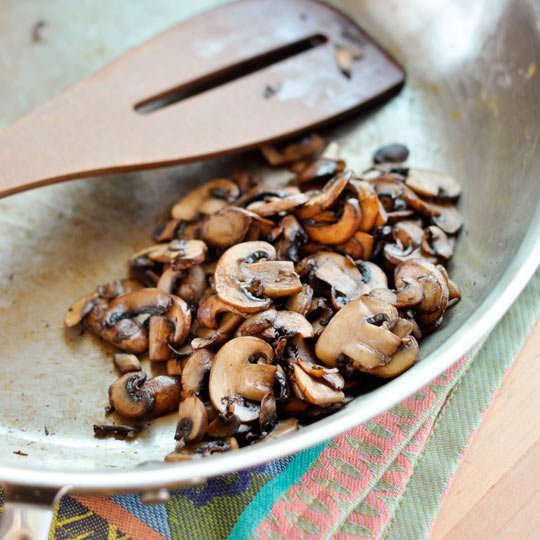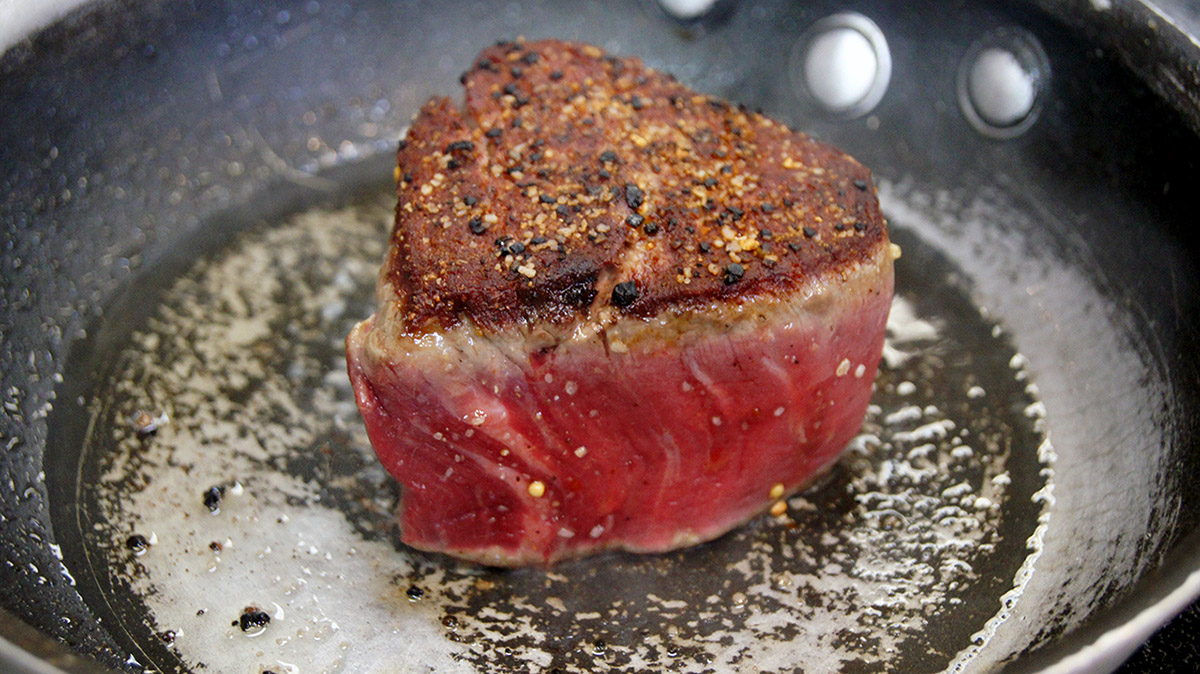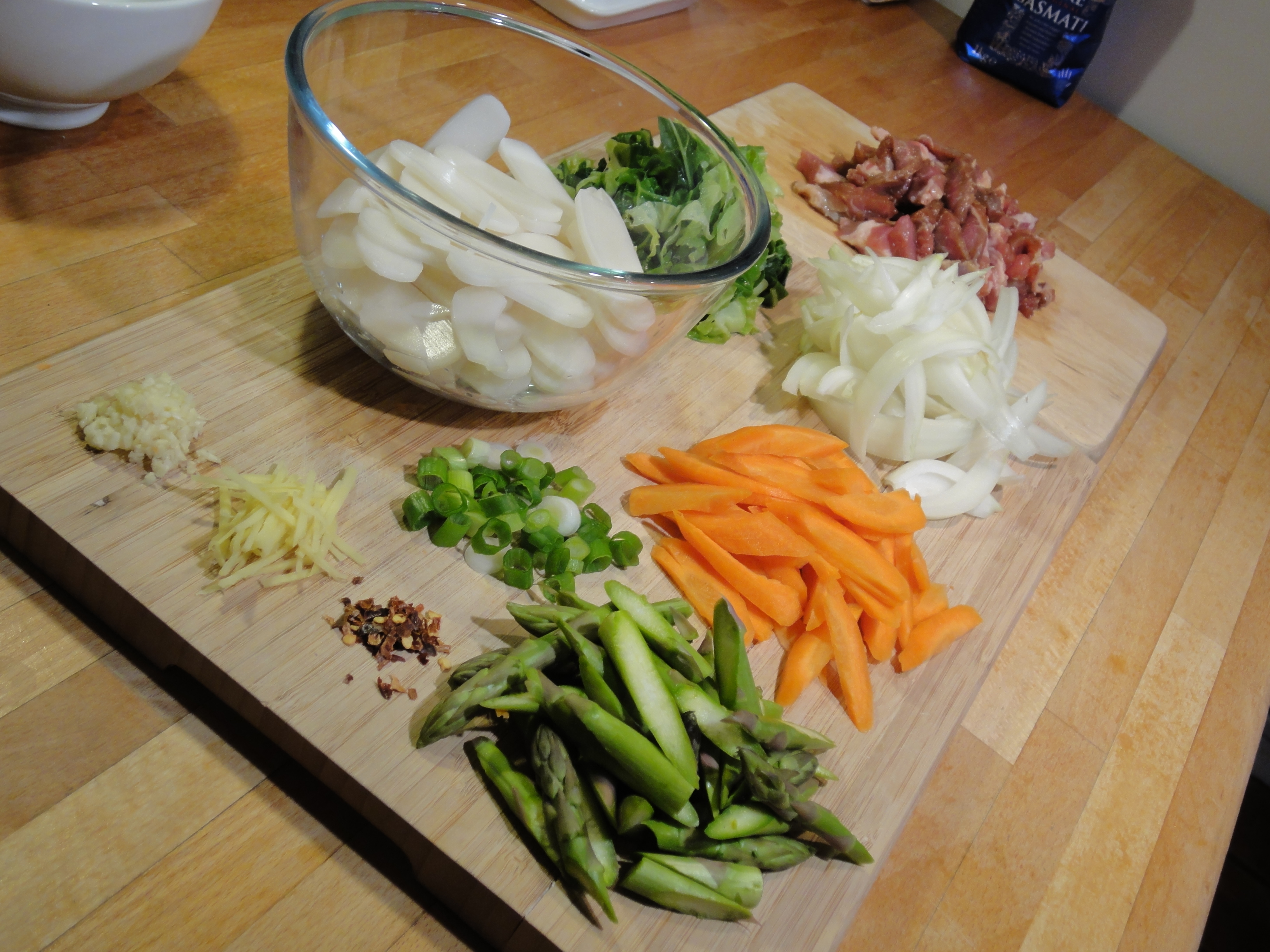Cooking School: Sauté
Almost every one of our dinners here at my house has sautéed vegetables. This is the best way that I can get my husband to eat a lot of vegetables :) so it is usually what I do for a side dish almost every night.
Recently, I have been reading up on the Cooking School from thekitchn.com and have learned a TON! One of my favorite lessons that I learned a lot from was how to sauté . I definitely have been doing a few things wrong and have upped my sautéed veggie game since I have been practicing the tips I have been learning.
A lot of recipes called for sautéed vegetables and it is automatically assumed that you know how to do it right, but you might be doing it a little bit wrong. Sautéing vegetables the right way ensures that you get the most flavor from every bite. Whether you’ve been wondering if you have been doing it right for years, or a first time cook—here are some tips to learn how to sauté the right way.

What does it mean to sauté? The basic idea here is quick cooking over medium-high heat, stirring frequently, until food is cooked. Sauté literally means "jump" in French. Applied to cooking, this describes the motion of your food in the pan: lots of stirring and some tossing as the food cooks. Sautéing is usually one of the first steps in recipes; vegetables in particular are usually sautéed first thing to at least partially cook them and build flavor in the overall dish.
Use a big skillet to sauté: Whenever you need to sauté, use a wide, shallow skillet that's big enough to hold your food without two much crowding. This is because you want enough room to move things without worrying that food will fall out of the pan and also to allow moisture in the ingredients to evaporate. If the pan is too crowded or the sides are too high, then the moisture stays trapped and steams the ingredients — not the end of the world, really, but flavors end up milder and less concentrated when this happens.
*I am definitely a big abuser of overcrowding my pan. I always think—if I just throw in another onion and a few more mushrooms I could have leftovers for an omelet tomorrow, but then my veggies get sad and soggy instead of sautéed so it is just not a win-win situation at all.
Use medium-high heat: Film the pan with a little oil, just enough to thinly coat the bottom of the pan, and set it over medium-high heat. When the oil looks shimmery and flows easily when the pan is tilted, you're ready to sauté.
Sizzle on contact: When you add your ingredients to the hot pan, you should hear them sizzle on contact. If not, no biggie this time, but next time let your pan heat a little longer or adjust the heat slightly higher.
Move the ingredients frequently: Cook as directed in your recipe (until softened, until browned, until wilted, and so on). You don't need to move the food constantly, but check on it and give it a stir every 30 seconds or so. The food shouldn't char on the bottom and everything in the pan should cook at roughly the same rate. Vegetables are usually done (or ready for the next step in the recipe) when they are crisp-tender; meat is done when it's cooked through.
What's the difference between sauté and stir-fry? These two terms sometimes get used interchangeably, which is confusing. They are quite similar, but when stir-frying, everything gets kicked up a notch. Stir-frying usually happens over very high heat — as high as your stove can go. The ingredients need to move constantly in the pan so they don't burn. Stir-frying also usually happens in minutes. It's super-quick cooking!
What's the difference between sauté, sear, and brown? More terms that often get mixed up! Searing is like sautéing taken down a few notches. The goal is to develop deep browning and caramelization on the underside of the ingredient, so the ingredients get moved or flipped only once that "sear" has formed. Browning only applies to meat and refers to cooking the meat just enough to brown it, but not so much that you develop darker spots of caramelization; this usually happens over lower heat than searing or sautéing.

Dry-heat cooking vs. moist-heat cooking: This feels like a good time to bring up an important distinction with cooking methods — cooking with dry heat and cooking with moist heat. Dry-heat cooking means the food cooks by direct heat, like the burner under the pan or in the radiant heat of the oven, with little or no liquids other than oil in the pan. Moisture in the food evaporates, intensifying flavors and allowing for things like caramelization and charring to occur. Sautéing, stir-frying, roasting, and grilling are all dry-heat cooking methods.
Moist-heat cooking is the opposite: foods cook fairly gently in some sort of liquid; the liquid or its steam surrounds the ingredients, cooking and tenderizing evenly from all sides. Boiling, simmering, steaming, and braising are all moist-heat cooking methods.
Sautéing different ingredients in a recipe: Ingredients usually get added to the pan and sautéed in a specific order. Some ingredients take a little longer to cook (or can withstand longer cooking), while other ingredients cook more quickly. This is why ingredients like onions and carrots are usually sautéed first, while things like bell peppers are added later. Pay attention to these kinds of instructions when cooking a recipe, as tempting as it may be to save a few minutes and cook everything all together!

Pro Tip!
The goal of sautéing is to cook and remove moisture from the ingredients with dry heat, so make sure the ingredients are dry to begin with. Spin or pat dry vegetables, especially leafy greens, before cooking to avoid getting splattered with hot oil and to remove any excess water that will steam your food instead.
- www.thekitchn.com
- www.lakegenevacountrymeats.com
- www.thebigfatnoodle.com
 Mary Richardson
Mary Richardson
Weekly Newsletter Contributor since 2014
Email the author! mary@dvo.com
